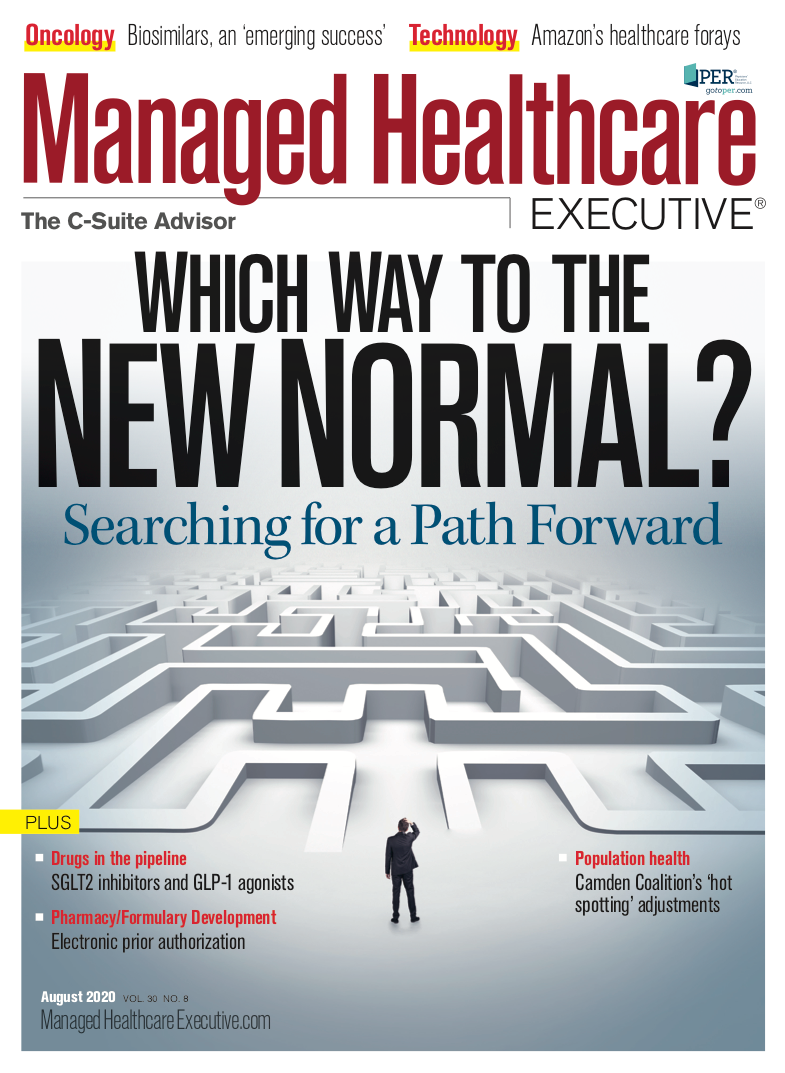New Ways, New Places For Healthcare’s Waiting Room
Many providers are asking patients to wait in their cars. In the future, the waiting room could be divided into small, pod-like rooms.
Patients probably won’t be flipping through issues of People and Reader’s Digest in waiting rooms this fall or even next year. The magazines will disappear, as may the decor and soft lighting that are supposed to keep patients relaxed. To keep patients and staff safe from COVID-19, many hospitals, clinics and medical practices are currently directing patients to wait in their cars before their doctor appointments.
Although the cellphone-lot version of the waiting room may work to reduce the transmission of SARS-CoV-2 in the short term, some experts question if this change could result in patients feeling less connected to their care providers, and most experts predict that patients will return to waiting rooms in the future. That means healthcare executives will need to find funding in their already tight budgets.
So what will waiting rooms of the future look like? Word to the wise: They will likely bear little resemblance to the crowded, even cozy spaces that patients have gotten used to.
Waiting in the car
The parking lot is the new waiting room at Valley Community Healthcare, a federally qualified health clinic in North Hollywood, California. Paula Wilson, the clinic’s CEO, says that signs guide patients to the parking area where they wait and that the parking area is organized by the departments where patients will be seen: a pediatrics parking area for pediatric patients, a women’s services parking area for patients being seen in the women’s services department and so on.
Patients are escorted from their cars into the exam room in the appropriate area by a staff member. Patients provide intake information on web-based forms on their smartphones; pens to fill out old-fashioned paper forms are used just once and then given to patients. Foot traffic through the clinic’s buildings is organized in a clockwise fashion, and signs guide patients to reduce the chance of people crossing paths and coming into close contact.
Wilson says she’s currently working with an architecture firm on a variety of plans, including the construction of outdoor cabanas for triaging patients before they enter the clinics. That’s a viable option in sunny, clement Los Angeles. If hospitals and clinics in the Northeast and the Midwest are going to add outdoor spaces, those structures will need to keep out the winter cold and snow.
Chris Cooper, M.H.A., a managing director at the Atlanta office of the accounting and business consulting firm BDO, observes that patients living in more densely populated areas such as New York City often rely on public transportation to get to their medical appointments. Besides, the hospital and clinic may not have the kind of spacious parking lots that facilities in car-oriented Los Angeles have. Cooper envisions hospitals and medical practices in places like New York using apps to inform patients about schedules and when to hop on the subway to get to an appointment on time with little, if any, waiting. (Of course, that presumes that the subway is reliable — and it isn’t.)
Coastal Medical, a 20-practice group headquartered in Providence, Rhode Island, is also using the cellphone lot model: Patients text or call from the parking lot. And doors are propped open, so patients don’t need to touch doorknobs during their visits, says Sarah Thompson, Pharm.D., MBA, vice president of operations and pharmacy. Coastal Medical sends out email alerts before telehealth or in-person appointments to prompt patients to sign the Health Insurance Portability and Accountability Act (HIPAA) privacy notice electronically and confirm current medications, allergies and insurance.
At the start of the COVID-19 pandemic, a majority of Coastal Medical’s patients received telehealth-based care. Now 70% of the group’s patients are using telehealth, says Thompson, who questions the purpose of patient waiting rooms in the future. She says that many of Coastal Medical’s patients feel an even closer relationship to the staff since the start of the pandemic because staff are encouraging patients to keep in touch about what they’re experiencing. For example, many of the group’s patients are unemployed or furloughed and dealing with food and housing insecurity. Staff are also calling the medical group’s most vulnerable patients, says Thompson.
Pods and booths
Dak Kopec, Ph.D., an environmental psychologist and an associate professor at University of Nevada, Las Vegas, agrees that asking patients to wait in their cars before appointments is a good short-term solution during the pandemic, but he doesn’t see it as a long-term answer.
The new waiting room will be quite different from its pre-COVID counterpart. What’s not going to work in waiting rooms, however, are the plexiglass shields now being used in stores that separate cashiers and shoppers, says Kopec. In a waiting room they would act as “contagion bubbles” that trap contaminants, he says.
The safer version of the waiting room will mean reorganizing spaces and fixing ventilation systems, says Kopec. Instead of chairs (the longer the wait, the more uncomfortable they become), he envisions “pods,” which would effectively be small rooms within the larger waiting room. Another possibility is structures similar to restaurant booths but with higher walls. The walls should be at least 7 feet high, since many people are at least 6 feet tall. A physical barrier of that height will prevent virus transmission between the patient and someone who coughs nearby and also provide privacy. Costs could be problematic; segmenting a waiting room into pods and booths would be expensive, Kopec says.
A less costly alternative: waiting areas that are similar to the bays found in preoperative and emergency departments with plastic curtains separating patients.
Placing tall walls or curtains between pods, booths or bays is important because viruses are heavier than air, explains Kopec. When the viruses leave the patient’s nose or mouth, they drift down. Hospital executives should also consider increasing the number of ventilation intake ducts, which will limit the pull of contaminated air into noncontaminated zones, says Kopec.
Cooper at BDO agrees that there will be a return to the waiting room inside the hospital or practice, but he says that patients will no longer tolerate congregated waiting areas that could foster transmission or, at the very least, make them feel anxious. Brighter, “less cozy” spaces will become the norm, predicts Deb Sheehan, a managing director at BDO. Carpet and fabrics that are difficult to clean may be removed, she says, and ambient lighting will be brighter to make patients feel that the space is cleaner.
Cooper says that emergency situations and the emergency department present a different set of issues. He advises deploying a nurse practitioner at the emergency department entrance to do triage. For some patients with relatively minor ailments, the goal is “treat and street,” which may mean giving the patient a prescription and sending them home with instructions for follow-up care. It’s important to keep those patients out of the interior of the hospital where there’s a greater likelihood of coming into contact with COVID-19, says Cooper.
Major investment needed
Dreaming up waiting room spaces is one thing; finding the money to do so is another. Sheehan says healthcare executives will need to redesign waiting areas to lure back patients. But most providers have seen a steep drop in revenue, even if the blow has been softened by federal government emergency funds. According to analysis done by the Advisory Board, elective procedures, which were halted this spring, make up about half of the revenue for a typical hospital. It’s also important to hospitals and medical practices to get patients in for preventive care. Breast, colon and cervical cancer screenings dropped by 86% to 94% in the early days of the pandemic, according tothe Epic Health Research Network, a research arm of the electronic health record company. Those screenings were below normal volume in mid-June, said the Epic researchers. According to their tally, 285,000 breast cancer screenings were “missed” between March 15 and June 16, along with 95,000 colon cancer screenings and 40,000 cervical cancer screenings.
How soon will provider organizations be switching over to these new waiting rooms? Although none of the experts provided a precise timeline, we’re most likely looking at months, rather than years.
Aine Cryts is a healthcare writer based in the Boston area.

Updated: UnitedHealth Group’s First Quarter Revenue Increases, But Company Revises Outlook
Published: April 17th 2025 | Updated: April 17th 2025The insurer’s healthcare expenses, especially physician and outpatient services, within the Medicare Advantage businesses were above what company leaders had expected.
Read More
Conversations With Perry and Friends
April 14th 2025Perry Cohen, Pharm.D., a longtime member of the Managed Healthcare Executive editorial advisory board, is host of the Conversations with Perry and Friends podcast. His guest this episode is John Baackes, the former CEO of L.A. Care Health Plan.
Listen
Breaking Down Health Plans, HSAs, AI With Paul Fronstin of EBRI
November 19th 2024Featured in this latest episode of Tuning In to the C-Suite podcast is Paul Fronstin, director of health benefits research at EBRI, who shed light on the evolving landscape of health benefits with editors of Managed Healthcare Executive.
Listen






















